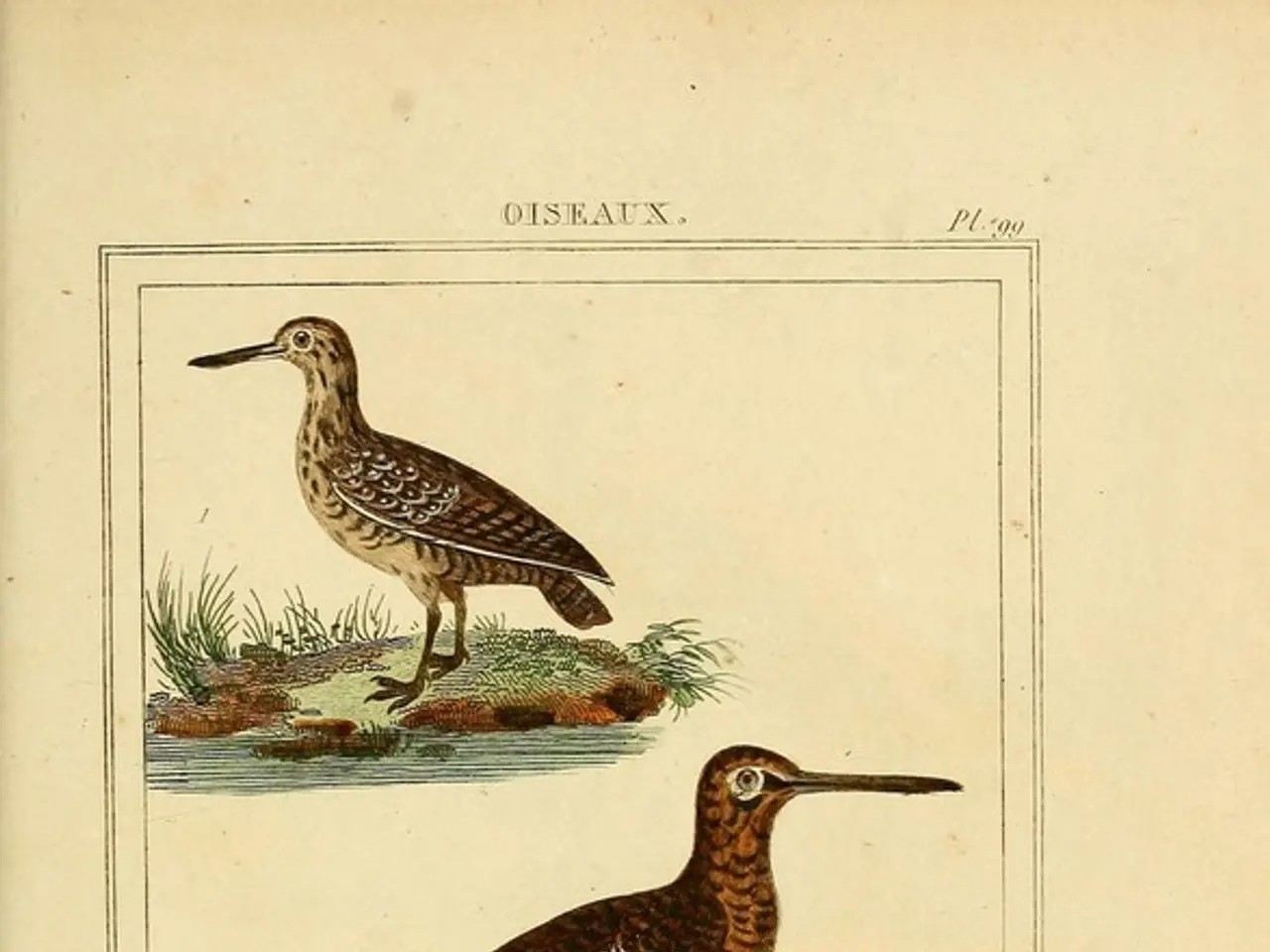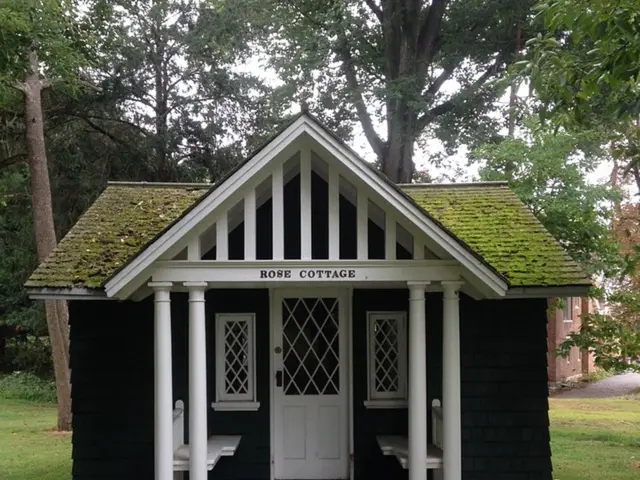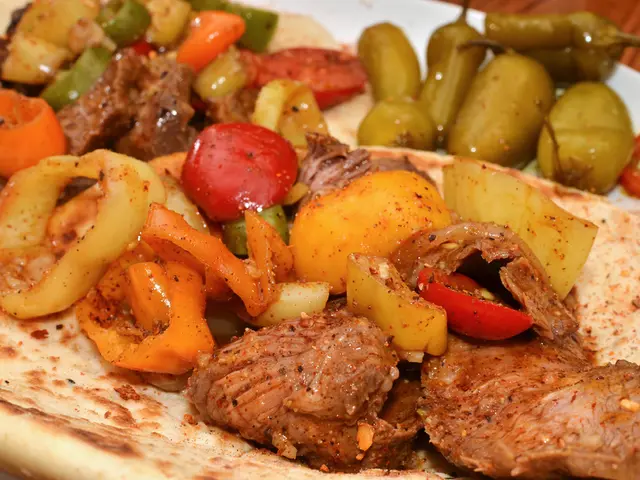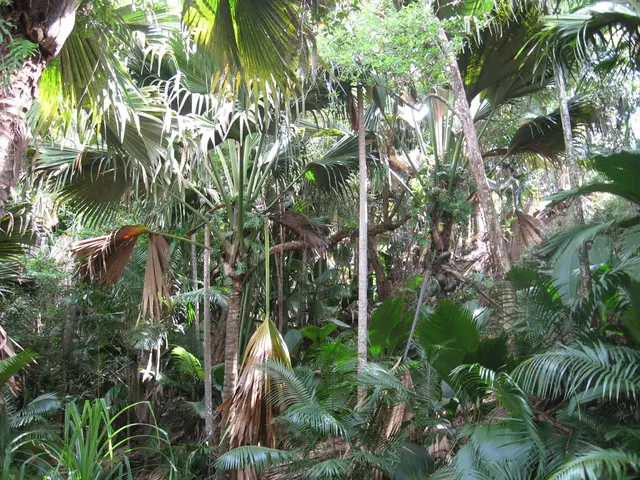Hummingbird Migration Underway - Learn 5 Essential Steps to Aid Them During Their 4,000-Mile Trek
Supporting Migrating Hummingbirds in Your Garden
As the autumn season approaches, many hummingbirds embark on their annual migration journey. To attract and support these vibrant creatures in your garden, consider implementing a few simple strategies.
Firstly, focus on planting nectar-rich, brightly colored tubular flowers that bloom during late summer and fall. Some excellent choices include trumpet honeysuckle, bee balm, pineapple sage, and milkweed. These flowers are particularly attractive to hummingbirds during migration season [1][2][4].
To supplement these natural food sources, hang hummingbird feeders filled with a proper sugar-water solution. It's essential to keep these feeders clean and refilled daily to ensure consistent nourishment for the migrating hummingbirds [1][2].
Providing fresh water sources such as shallow birdbaths, misting systems, or drippers also supports hummingbirds' hydration and helps them bathe and preen during their journey [1][2].
Practical tips for attracting and supporting migrating hummingbirds include:
- Planting a diverse array of native nectar plants that bloom late summer through fall, such as coral honeysuckle, valerian, ironweed, goldenrod, aster, pineapple sage, and milkweed, to sustain them during migration [1][4].
- Using hummingbird feeders designed to minimize bee and ant access, and avoiding additives - plain sugar water is best [1][2].
- Offering tiny perches near feeders and flowers to provide resting spots [1].
- Leaving old flower stems and some spiderwebs intact, as brown blooms still contain nectar, and hummingbirds use spider silk for nest building [1][4].
- Placing water features at hummingbird-accessible heights and keeping them clean daily [2].
Adding shade-tolerant ground covers like heuchera or pulmonaria that flower attractively can also help provide continuous nectar sources and habitat shelter [3].
In addition, using anti-collision stickers on windows, such as the WindowAlert Anti-Collision Window Stickers, can help prevent hummingbirds from flying into windows during migration [4].
Some trees that are attractive to hummingbirds include the red buckeye, Eastern redbud, chaste tree, and crab apple [6]. Misters, drip systems, and bird baths with shallow trays, perching options, and some element of color or sparkle can also attract hummingbirds and provide them with a source of hydration [8].
When it comes to feeders, the Nature's Way Hummingbird Feeder and Perky Pet's Clear Nectar are recommended for hummingbird feeders and nectar, respectively [9][10].
Remember, hummingbird migration generally occurs at two points throughout the year - fall and spring. During spring, birds first return to mild-weather regions, while migration continues through fall until the birds have reached a much warmer climate [7]. Migrating hummingbirds travel up to 4,000 miles, with some traveling as far apart as Alaska and Mexico [11].
By implementing these strategies, you can create an inviting, energetic stopover site to support hummingbirds on their long migratory flights.
- Incorporate a range of flowers like coral honeysuckle, valerian, ironweed, goldenrod, aster, pineapple sage, and milkweed into your home-and-garden to provide nectar for hummingbirds during their migration.
- Utilize fashion-and-beauty accessories, such as WindowAlert Anti-Collision Window Stickers, to prevent migrating hummingbirds from colliding with your windows.
- For sports enthusiasts, supporting migrating hummingbirds can be as simple as offering diverse food sources like nectar-rich flowers, sugar-water solutions, and fresh water, encouraging them to fuel up and continue their journey.




